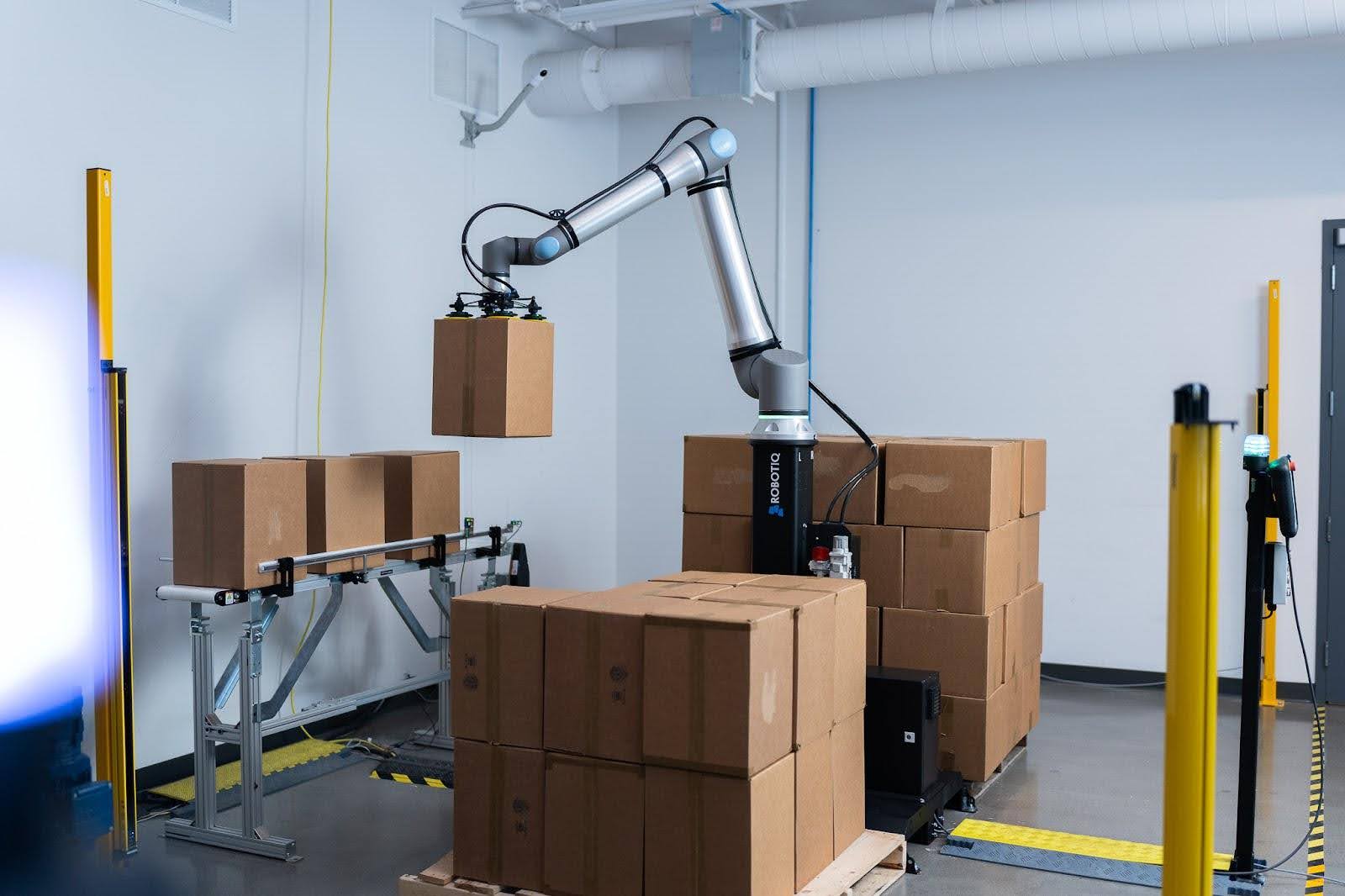Robotiq, Samuel Bouchard, sat down with Josh Davis, the leading manager of the channel sales to discuss the automation path of the leader.
Background
This Robotiq customer is a large meat processing device that gives some of the largest fast food chains in the United States and worldwide. They built their reputation as automation leaders and constantly innovated to stay forward in their industry. With the production settings already using technology, they face challenges in their paletization operations at the end of the line. The company operates 11 production lines with scaling plans of up to 50 others, which signals growth potential.
Commercial challenges
The key driving force for automation was the growing request of their high -ranking fast food customers. The growing volume of production required a reliable solution to eliminate narrow places in their paletization process. The relying only on human work was not a long -term option due to the growing requirements for permeability. In addition, the mainstaization of profitability with tight margins from large customers necessary for operational efficiency.
Specific challenges include:
- Fulfillment of production forecasts for another three to five years.
- To achieve a rapid return on investment by reducing labor costs and increasing production efficiency.
- Overcoming pressure to remain competitive in cost management.
The aim of this challenge has focused on ensuring that they can continue to be a scale, while their customers will have high standards.
Why was Robotiq’s palletizing solution to a good adaptation?
Our palletization solution has provided flexibility and scalabibility that the customer needed. Among the key factors that made him an ideal choice:
- Flexibility: The system could easily adapt to changing production needs, including SKU modifications and box size. This ability was necessary for a dynamic production environment with multiple lines.
- Compact design: The cosmic efficient system fits smoothly into their existing settings without required to make significant adjustments.
- Ease of use: The solution contained intuitive programming, which facilitated operation and maintenance for the customer’s team.
- Performance: During the testing side by side, he exceeded the solution of competitors impressive margins and processed another 10 boxes per minute. This excellent performance was a decisive factor.
- Supporting room: Exceptional local support ensured that the customer had access to professional guidance and problem removal whenever necessary, further consolidates his decision.
- Proven record: It was tested and tested in similar applications and provided confidence in its illumination and royal potential.
Tips to automate the palletization at the end of the line
- Start the EarlY: Delays of automation builds you on a non -citizen on a competitive market. Companies that accepted automation years ago are now successfully expanding with 10 to 20 units. If you’ve already automated, it’s time now.
- Focus on proven solutions: Decide on standard, non -crushed solutions with a short time and a quick return time. Proven products are less risky and come from the results.
- Prioritize flexibility: Select a system that adapts to changing production needs, be it new SKO configurations, box sizes or lines.
- Support of local entry: Working with partners who can provide not only the best product, but also local support to maximize the operation and efficiency of the system.
- Break the cycle of cash restrictions: While investing in automation requires initial capital, the king is often realized per year or less, especially with more shifts. The investment will now save money and increase the advantage of a long -term point of view.
Automation is not just a trend; It is a requirement that companies like to remain competition. The sooner you invest, the earlier you can benefit from the benefits of improved efficiency, reduced costs and increased production capacity.


